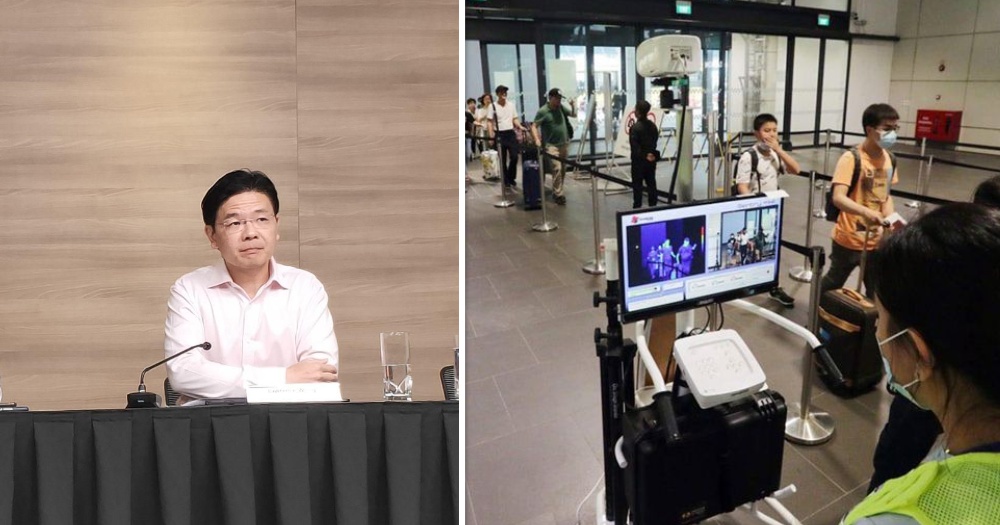The Ministry of Health announced stricter measures that would restrict outside gatherings.
Here are some of them.
In response to these new measures, a question brought up during the press conference was why is this not considered a lockdown, and why are schools still open despite these measures.
According to Minister for National Development and co-chair of the Multi Ministry Taskforce Lawrence Wong, the term lockdown is used quite loosely these days.
Wong said that the Singapore government prefer to think of their strategies in categories based on risk.
The previous announcements on social distancing was considered one level, the current measures introduced, according to Wong, would then constitute another level.
If these measures prove to be insufficient or ineffective, the Singapore government will then take their measures to the next tier. For example, suspension of schools.
However, if these measures are effective, Singapore will go back down to the previous tier of measures.
Here is the question Wong was answering.
QNS: The decisions today that you announced, they are pretty much effectively a lockdown, so why not you just go all the way to shut schools and call it a lockdown, the way other countries around the world are doing in order to reduce the level of transmission?
Here is his rather lengthy answer.
LW: People use the word lockdown very loosely these days and it means many things to different people. We like to think of our strategies in different categories and based on risk. At the very baseline level, there are things that we ought to do permanently, and even after Covid-19 is over and it will be over at some stage, we have to raise, we have to maintain these standards.
For example, things like washing our hands regularly, not using your hands to touch your face, these are all things that better public hygiene standards, these are all things that we think are important, baseline permanent changes.
That’s why we launched an SGClean campaign and even after Covid-19, these practices will be useful for countering any other infectious diseases.
Beyond the baseline, we are talking about a range of measures, that can be put in place throughout, or precautionary measures that can be triggered, as we say, additional brakes, as and when the need arises. So we announce a series of measures last Friday for F&B outlets to have separated seating, that’s the next level of risk and that’s the next level of precautionary measures which we have introduced.
Now we’re putting in place a third category, a higher category of additional precautions, including limiting gatherings to less than 10 and even closing some of these venues where we think social gatherings are likely to be concentrated. We have said that these measures will be put in place for a month and if these measures are effective for a month and it helps to break potential transmission chains, we may then come back to here too, to where we were last Friday.
If these measures are not effective, we may continue them for another month, we could escalate further. Escalating further will then go into the next level of measures which will include suspension of schools and workplaces. They have to go together.
Because there’s no point talking about closing the school, but people need to look after children and if parents are working, then very hard for them to look after the children and the children will be running around anyway in the community.
So closure of schools, closure of workplaces other than essential activities, that’s the most drastic step if you were, that’s what i suppose people call a lockdown, and that set of drastic measures may well be necessary, but again, we do not have to get there in one step.
We can take a series of breaks, and if the situation warrants it, then we may very well, at a later stage, have to do that. That’s why we are encouraging all Singaporeans to take these measures seriously.
If we do these steps well, we may able to get through this current, very critical time of the infection cycle, where we are seeing a rise in imported cases, a very wave of imported cases and very real risk of local transmission happening.
It has not happened yet in a widespread manner and so all of these measures are really pre-emptive. And there perhaps is a bit of a challenge in getting people to take it seriously. In many countries, the very drastic measures have occurred after a widespread outbreak.
Thousands of cases or tens of thousands of cases. We are not there and so perhaps there is a certain sense of things are ok in Singapore but the risks are very well and that’s what we are trying to highlight and that’s why everyone needs to take these measures seriously and if all of us do our part, that’s the only way we have a chance of success with these strategies.
Image by Syahindah Ishak and Lawrence Wong FB
If you like what you read, follow us on Facebook, Instagram, Twitter and Telegram to get the latest updates.
